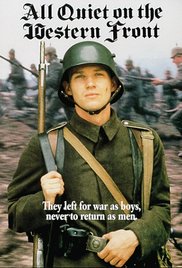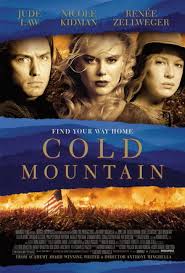 by Latasha Jackson
by Latasha Jackson
Synopsis of Film:
Cecil Gaines witnesses the death of his father at the hands of the plantation owner, who also served as their boss, and he also witnesses his mother’s mental displacement from reality after she is raped by the same man who killed Cecil’s father. The sharecropper’s grandmother took pity on Cecil whose family was destroyed in the matter of a day and turned him into a houseboy.
When Cecil turns old enough, he strikes out on his own, but being a black man under white supremacy, he went hungry and jobless. In the desperation of hunger, Cecil breaks into a cake shop for some food, and he is discovered by Maynard, who is the master servant at a hotel. Maynard teaches Cecil the rules of being a good servant and helps Cecil get a job where he meets his wife, Gloria.
Later, Cecil is hired on at the White House as a butler because his skills were noticed at the hotel. During his time in the White House, Cecil serves Presidents Eisenhower, Kennedy, Johnson, and Reagan. However, while Cecil is trying to be a successful butler, his family begins to fall apart. His lack of attention leads to his wife’s subsequent alcoholism and affair with the neighbor, Howard. Cecil’s son, Louis becomes involved in activism for the rights to equality, and this passion leads to the ongoing dispute between Louis and his father. Cecil’s younger son, Charlie, enlists in the Vietnam War where he dies.
Witnessing all of the racial turmoil from the White House, Cecil begins to understand his son’s fight and even joins him in a protest where they are arrested together. At the end of the film, Cecil’s wife has died, and President Barack Obama has been elected. Cecil goes to meet the new president wearing all of the articles that he was given by the different presidential families. Hearing the voices of all of the presidents that he has served, Cecil enters the oval office to meet President Obama while Obama’s voice speaks his famous slogan “Yes, We Can.”
Historical Context:
Most of The Butler contains historical events, such as presidential decisions, elections, and protests for equality. The film portrays presidents who actually served in the White House. However, the film shows more of the men behind the decisions, and it is unclear whether the personality types portrayed for each president is historically accurate. The decision to enforce the integration of black students at Little Rock Central High School is a truly historical event because it federalized the Arkansas National Guard.[1] It is also historically significant because it is the first time that black civil rights were enforced after the Brown v. Board of Education case.[2]
The Southern Christian Leadership Conference (SCLC) that Louis joined in the film is a real organization that fought for black civil rights through peaceful protests and sit-ins.[3] Their protest, The Birmingham Campaign, is the catalyst for Kennedy’s national address about the Civil Rights Act of 1964, and both of these events are a part of American history.[4] Also, Lyndon B. Johnson, Kennedy’s successor, did, in fact, support the rights of blacks in his time in the White House. He upheld Kennedy’s start for civil rights and equality by initiating a series of programs called the “Great Society.”
The film also portrays the Selma to Montgomery marches, which were significant in history because they were a part of the Voting Rights Movement. President Johnson’s subsequent decisions to push for black voting rights are also historically accurate. The Black Panthers, who were also portrayed in the film, were a historically significant group of individuals. The Black Panthers, which was an activist group, played a major role in preventing police brutality and bringing that issue to the forefront in the 60s. [5]
Also, historically important in this film is Obama’s presidential election. He is the first African American president, and his slogan “Yes, We Can” is significant in this context. It portrays the determination for black equality that is illustrated by the numerous protests, sit-ins, and activist movements in the film. Obama’s slogan is particularly important in that moment in the movie because it shows not only Cecil’s success but the success of blacks everywhere. All of the rights that blacks were fighting for were won by the time Obama was elected president. His election to presidency is historically significant because that is the ultimate position to gain because it is the power to lead millions.
Most of this film’s context is historical in nature. There are even events, such as Cecil’s mother being raped and his father being killed, that happened to many African-Americans in history. Thus, they are even historical. However, the major events in the movie such as the presidential decisions and black rights movements and protests are a part of American history. All of the historical events in this film worked together to show the plight of being black during the film’s setting. It shows the racial injustices that were taking place from the top to the bottom in the social system.
Bibliography:
How true is the film?
The film has both reality and fiction throughout. It is based on a true story about a black man named Eugene Allen.[6] Allen’s story was brought to the forefront by an article, “A Butler Well Served by This Election,” in the Washington Post. However, the article focused more so on blacks in the White House and the reactions to them.[7] Although the film is based upon a real person and some real events, there are numerous fictional aspects.
Allen’s childhood as portrayed in the movie is fictional.[8] He grew up in Virginia and served as a waiter at a resort and later a country club.[9] Unlike the film, Allen was not offered the job at the White House; he heard about the job and applied.[10] While Allen did work under the presidents depicted in the film, his position was more glorified for the film, and he actually began working in the White House under President Truman.[11]
The reality is that Allen actually washed dishes, stocked cabinets, and shined silverware as a pantry man until he was granted the position of maitre’d under Ronald Reagan.[12] Also, Allen’s wife did not struggle with alcoholism or have an affair, and they only had one child who did in fact fight in the Vietnam War.[13] However, he did not die in the war and is still living.[14] Allen’s wife did in fact die right before President Obama’s election into office, but Allen’s visit to see the President in a one on one capacity was fictional.[15] Overall, the film was a mish mash of truths and untruths.[16]
Bibliography:
2008. Haygood, Wil. 2008. “A Butler Well Served by This Election.” Washington Post, 7 November. WashingtonPost. (accessed February 1, 2016).
2010. “Eugene Allen, White House butler for 8 presidents, dies at 80.”Washingtom Post, 2 April 2010. WashingtonPost. (accessed February 1, 2016).
2014. National Park Service. Nine Students Fight for School Integration in Little Rock, Arkansas. n.p.: 2014. Gale Virtual Reference Library, EBSCOhost (accessed February 1, 2016).
- “Black Panther Party.” Funk & Wagnalls New World Encyclopedia 1p. 1. Funk & Wagnalls New World Encyclopedia. EBSCOhost. (accessed February 2, 2016).
- “Southern Christian Leadership Conference.” Funk & Wagnalls New World Encyclopedia 1p. 1. Funk & Wagnalls New World Encyclopedia. EBSCOhost. (accessed February 2, 2016).
Trailer:
https://www.youtube.com/watch?v=DUA7rr0bOcc
[1] Service, National Park. 2014. Nine Students Fight for School Integration in Little Rock,
Arkansas. n.p.: 2014. Gale Virtual Reference Library, EBSCOhost (accessed February 1, 2016).
[2] Ibid.
[3] 2015. “Southern Christian Leadership Conference.” Funk & Wagnalls New World Encyclopedia 1p. 1. Funk & Wagnalls New World Encyclopedia. EBSCOhost. (accessed February 2, 2016).
[4] Ibid.
[5] 2015. “Black Panther Party.” Funk & Wagnalls New World Encyclopedia 1p. 1. Funk & Wagnalls New World Encyclopedia. EBSCOhost. (accessed February 2, 2016).
[6] Haygood, Wil. 2008. “A Butler Well Served by This Election.” Washington Post, 7 November. WashingtonPost. (accessed February 1, 2016).
[7] Ibid.
[8] Ibid.
[9] Haygood, Wil . 2010. “Eugene Allen, White House butler for 8 presidents, dies at 80.” Washingtom Post, 2 April. WashingtonPost. (accessed February 1, 2016).
[10] Ibid.
[11] Ibid.
[12] Ibid.
[13] Ibid.
[14] Ibid.
[15] Ibid.
[16] Ibid.

 by Latasha Jackson
by Latasha Jackson by Edward Deaton
by Edward Deaton

 by Edward Deaton
by Edward Deaton by Tiffani Hagan
by Tiffani Hagan
 by Shay Hardin
by Shay Hardin by Sidney Jones
by Sidney Jones by Hannah Ramey
by Hannah Ramey